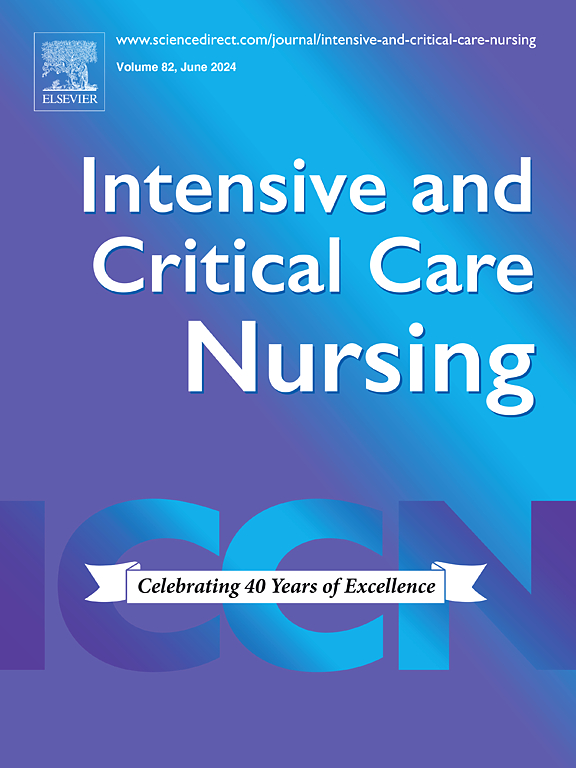Incidence and characteristics of device-related pressure injuries in intensive care: A four-year analysis
IF 4.9
2区 医学
Q1 NURSING
引用次数: 0
Abstract
Objectives
To describe and analyse the incidence and characteristics of intensive care-acquired device-related pressure injuries.
Design
Secondary data analysis of intensive care-acquired pressure injuries during 2019–2022.
Setting
Single general intensive care unit in Brisbane, Australia.
Main outcome measures
Intensive care-acquired pressure injury incidence, device-related pressure injury incidence, non-device-related pressure injury incidence, pressure injury category and location, device associated with pressure injury.
Results
During the 4-year period, there were 7343 intensive care admissions of whom 413 (5.6 %) patients developed an intensive care-acquired pressure injury. The incidence of device-related pressure injury was 4.0 % compared to 2.7 % non-device-related pressure injury. In total there were 461 device-related pressure injuries, which were mostly (55 %) associated with endotracheal tubes or the methods used to secure them. Consequently, the majority of injuries were found on the mucous membranes (lips, mouth and tongue). The other main devices associated with injuries were high-flow nasal prongs (9.3 %), indwelling urinary catheters (6.7 %), nasogastric tubes (6.5 %) and oxygen masks (5.0 %). Overall, device-related pressure injuries were less severe than non-device-related pressure injuries, however they occurred in a shorter time frame (median 4 days versus 6 days). A range of factors was associated with device-related pressure injuries but overall, their presence or duration was less than with non-device-related pressure injuries.
Conclusion
The study results provide rigorous evidence of the incidence and characteristics of device-related pressures injuries, that can be used to benchmark with other intensive care units nationally and internationally.
Implications for Clinical Practice
Endotracheal tube-associated pressure injuries were the most common type of device-related injury, providing a clear focus for preventative intervention. Given the high proportion of these device-related injuries, effective interventions would have a significant impact on overall reduction of intensive care-acquired pressure injuries. Since most injuries occur within three days of device insertion, early preventative intervention is time-critical.
求助全文
约1分钟内获得全文
求助全文
来源期刊

Intensive and Critical Care Nursing
NURSING-
CiteScore
6.30
自引率
15.10%
发文量
144
审稿时长
57 days
期刊介绍:
The aims of Intensive and Critical Care Nursing are to promote excellence of care of critically ill patients by specialist nurses and their professional colleagues; to provide an international and interdisciplinary forum for the publication, dissemination and exchange of research findings, experience and ideas; to develop and enhance the knowledge, skills, attitudes and creative thinking essential to good critical care nursing practice. The journal publishes reviews, updates and feature articles in addition to original papers and significant preliminary communications. Articles may deal with any part of practice including relevant clinical, research, educational, psychological and technological aspects.
 求助内容:
求助内容: 应助结果提醒方式:
应助结果提醒方式:


